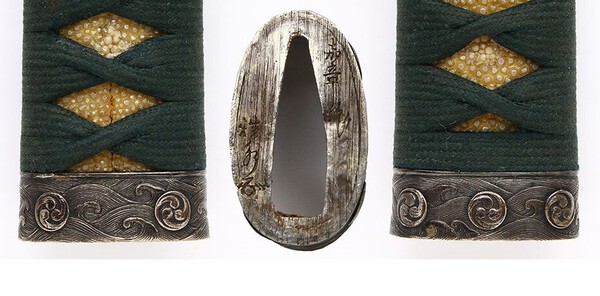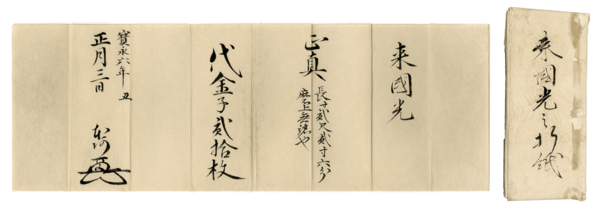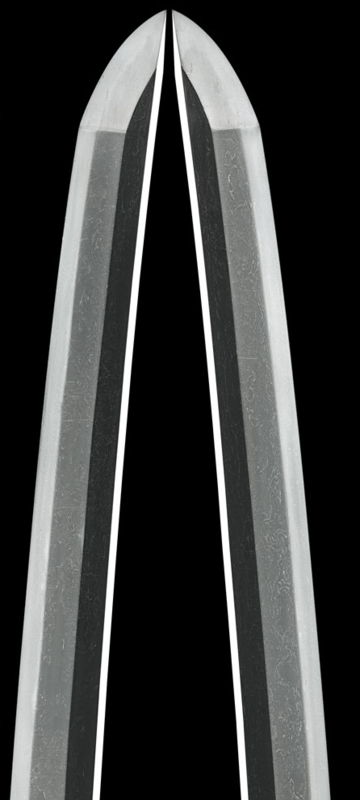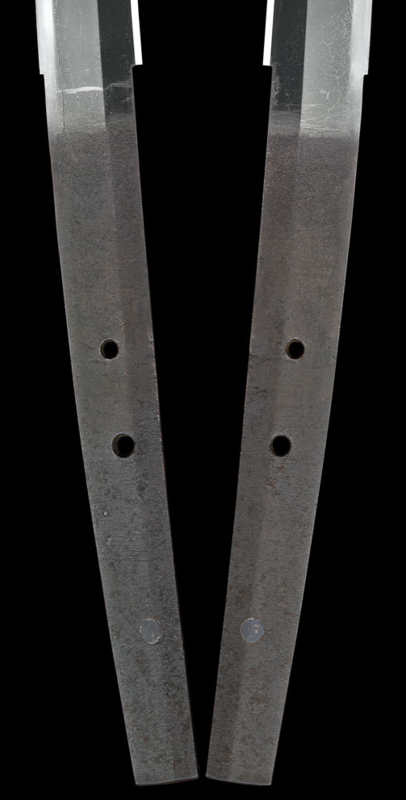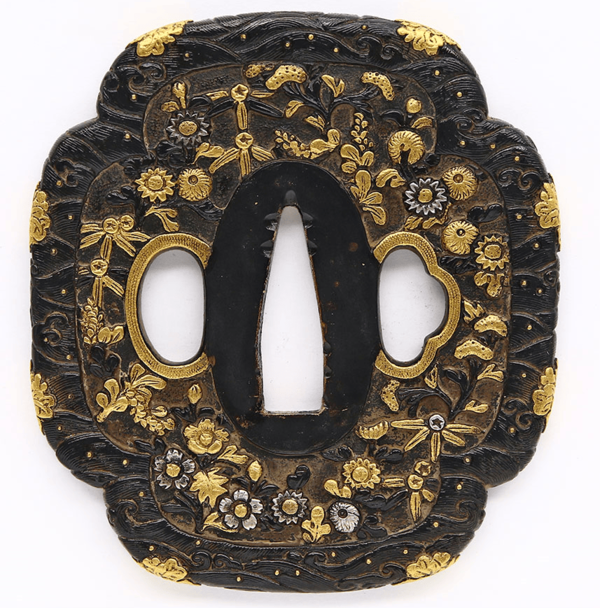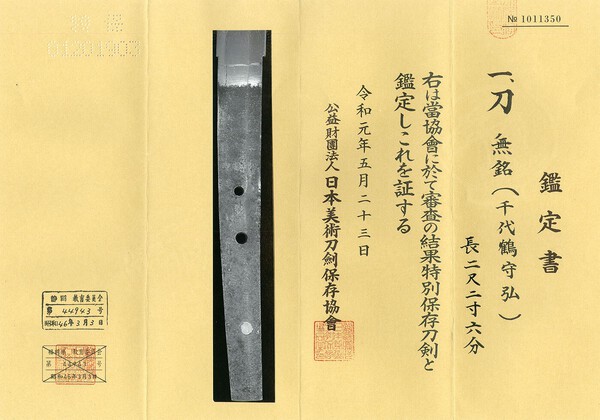-
Posts
393 -
Joined
-
Last visited
-
Days Won
2
Content Type
Profiles
Forums
Events
Store
Downloads
Gallery
Everything posted by ckaiserca
-

Possible to Read Mei on This Fuchi?
ckaiserca replied to ckaiserca's topic in Translation Assistance
Thank you! -
-
The bird is a Chinese phoenix. https://en.wikipedia.org/wiki/Fenghuang Detailed pictures of such a koshirae can be found here: https://www.aoijapan.com/tachi-koshirae/
-
Fortunately, getting the swords out of Japan is easier than getting them into the country.
-
I would love to own a print like that. What a great subject.
-
We are happy to have you here. Welcome Clement!
-

Newbie looking at Samurai Museum
ckaiserca replied to Hutch's topic in General Nihonto Related Discussion
Kevin, The meeting schedule for the remainder of 2024 is as follows: Saturday, February 03 2024 12:00 PM-4:00 PM Saturday, April 06 2024 12:00 PM-4:00 PM Saturday, June 08 2024 12:00 PM-400 PM Saturday, September 07 2024 12:00 PM-4:00 PM Saturday, November 09 2024 12:00 PM-4:00 PM JCCC Token Kai I can’t attend the February 3 meeting either due to a commitment at work, but will be at the other meetings. I look forward to meeting you at a future meeting. -

Newbie looking at Samurai Museum
ckaiserca replied to Hutch's topic in General Nihonto Related Discussion
Hi Kevin, Toronto has a great sword group (JCCC Token Kai) that meets at the Japanese Canadian Cultural Centre. There are lots of very knowledgeable people who come to the meetings. The next meeting is on Saturday February 3. The meeting will start at 1:00 pm, but people arrive for some pre-meeting socializing and show and tell at around noon. Visitors are always welcome. If you want to join as a formal member, the cost is $20.00 per year for the club, plus $30.00 to become a member of the JCCC. The knowledge that is available at a single meeting is more than worth the cost of membership. -
That would be an excellent bag for the 100 Million Dollar Tachi.
-

"Green papers mean no papers"
ckaiserca replied to Toryu2020's topic in General Nihonto Related Discussion
I have a mumei katana that had two different white papers, one from 1960 that attributes it to Shitahara, and one from 1975 that attributes it to Fujishima. I submitted the blade for Shinsa in 2021, and it papered as Hozon attributed to Mino Senjuin. Clear as mud. -
Without addressing the blade itself, the wrapping of the tsuka is wrong. The areas where the wraps cross over should always alternate. The ones on your sword are all laid in the same direction.
-
I can't say I've ever seen so many mekugi-ana before. And the size of them seems unusual.
-
The only return on "Muroboku-Cho" on a Google search is a reference to the book by Clive Sinclair you mentioned in your post. That is fairly telling.
- 1 reply
-
- 1
-

-
The knowledge that can be tapped on this site makes the Gold status a bargain. I am happy to be able to contribute.
-
The number one tip-off before I even saw the blade was the tsuka-ito. The wrap pattern on a proper tsuka-ito always alternates. This one is always wrapped in the same direction. The number two tip-off is the serial number on the habaki and the "kanji" on the blade itself. The number three tip-off is the super prominent grain pattern on the blade. The number four tip-off is the shape of the kissaki (point of the blade).
-

Wakizashi for your review.
ckaiserca replied to vantique's topic in General Nihonto Related Discussion
It is difficult to tell from the photos, but does the discolouration on the blade appear to be rust when you view it in person or does it seem to be something else that is on the blade? I think that the blade might have been treated with something like Cosmoline. -

Nice set of fittings with fish theme.
ckaiserca replied to Surfson's topic in Translation Assistance
What a stunning set! Thanks for sharing. -
The export permit took slightly more than 4 weeks on my last sword purchase. YMMV
-

Help identifying Japanese WW2 Banner
ckaiserca replied to AlphaRaider's topic in Translation Assistance
Running it through Google Translate does translate the smaller text in the middle towards the top as 7th Infantry Regiment. The text on the right might say Congratulations Ken Sano (a proper name?). -

Update on Wakizashi
ckaiserca replied to Misterbovigoren's topic in General Nihonto Related Discussion
I think a key thing to remember is you can usually get a very nice blade in very good condition for less money than the price of buying a mediocre blade and having it polished. Sometimes, you find a real diamond in the rough that is worth having a restoration done on, but many (most?) blades that have been allowed to rust in someone's attic are probably not worth the effort and expense of a good quality polish. -
I was thinking that it looked like someone went at that Nakago with a gold paint marker...
-
I just recently received an addition to my small collection. I thought the members here might enjoy seeing it. Katana in Shirasaya with Koshirae NBTHK Tokubetsu Hozon Token (May 23, 2019) Inscription: Mumei (千代鶴守弘 Chiyotsuru-Morihiro) Sayagaki: Verso: Unsigned Son of Yamashiro Rai Kuniyasu, Chiyotsuru Morihiro, made this. Masterpiece (with) Jiba in excellent condition. Length of 2 shaku, 2 sun, 6 bu. Appraisal value of 200 gold “mai” (Kaō) Hon’a (possibly the 19th generation Hon’ami Chumei (忠明) or Kochu (光仲)? Recto: “Den” 8th Head of Numazu Domain Lord Mizuno Tadanori carried this sword Storehouse 1, (i) #3 An 1709 Origami from Hon’ami Kōchū attributes this sword to Chiyotsuru Morihiro’s father Rai Kunimitsu: Cover: Appraisal document of Rai Kunimitsu Contents: Rai Kunimitsu Genuine Length: 2 Shaku, 2 Sun, 6 Bu Shortened, unsigned Appraisal Value: 20 Gold “Mai” Hōei 6, year of the Ox (1709) January 3rd (Kaō) Hon’a (Hon’ami Kōchū 本阿弥光忠) Sword Details: Polished Habaki: double-layered gold habaki Nagasa: 2 shaku, 2 sun, 6 bu (68.5 centimetres or 26.97 inches) Sori: 1.2 centimetres or 0.47 inches Mekugi-ana: 2 holes with a third that has been plugged Width at Hamachi: 2.98 centimeters or 1.17 inches Width at the tip: 2.22 centimetres or 0.87 inches Thickness: 0.93 centimeters or 0.37 inches Weight: 780 grams Era: Nanbokucho period, from Bunna (1352) to the early Muromachi period, Ouei 1394 Blade Description: The blade is O-suriage (greatly shortened) and mumei (unsigned). The blade has a deep sori (curvature) with moderate width and thickness, and an elongated kissaki. The Jigane features a well-compact koitame hada (small wood grain pattern) with o-hada (mixed large grain) and clear nie (hardened steel granules). The Hamon is bright and refined ko-midare (small irregular) hamon with active ko-ashi (small feet), and the blade exhibits sunagashi (sand-like patterns) and fine lines of nie. The Boshi has a large notare (turnback) with a rounded tip. Information on the swordsmith: The name Chiyotsuru is derived from Chiyotsuru-maru. Chiyotsuru was the child of Echizen swordsmith Yamashiro Rai Kuniyuki. The first-generation Kuniyuki came from the Rai school and migrated to Echizen, residing in present-day Takefu City or Tsuruga City in Fukui Prefecture. The extant works are limited to the two generations of Kuniyuki, Morishige, Morohiro, and the contemporaries of Kuniyuki, Shigekuni and Yukiyuki. The name Chiyotsuru has long been popular for celebrations and ceremonies. Chiyotsuru-mori Hiro had four generations of smiths with their respective inscriptions. The first generation was active in the mid-Nanbokucho period from Bunna (1352) onwards, the second generation in the late Nanbokucho period from Shitoku (1384) onwards, the third generation in the Oei period of the Muromachi era from Oei (1394) onwards, and the fourth generation in the Kajō period of the Muromachi era from Kajō (1441) onwards. Their styles include those reminiscent of Mino swords and those incorporating the Soshu style. Koshirae: Tsuba: A red copper base with high relief carving of waves and a family crest on the mimi (ear) and chrysanthemum flowers on the surface, decorated with coloured enamel in gold. Fuchi kashira: A silver base with high relief carvings of Hidari-mitsudomoe (three comma) mon and waves. Saya: A pear skin-textured saya with black lacquer inlaid in a belt-like pattern. Menuki: Made of copper, featuring high relief carvings of three Hidari-mitsudomoe mon, decorated with coloured enamel in gold.


